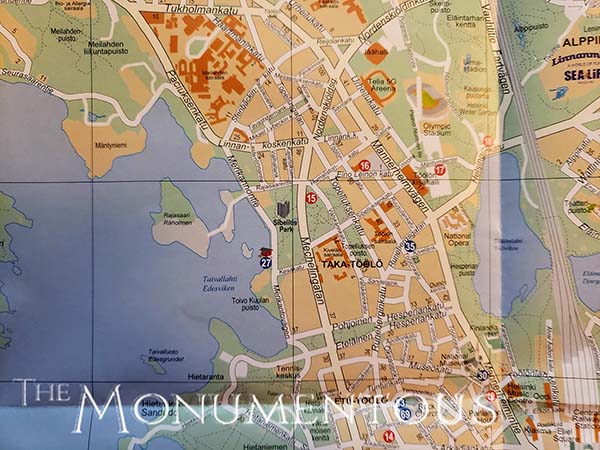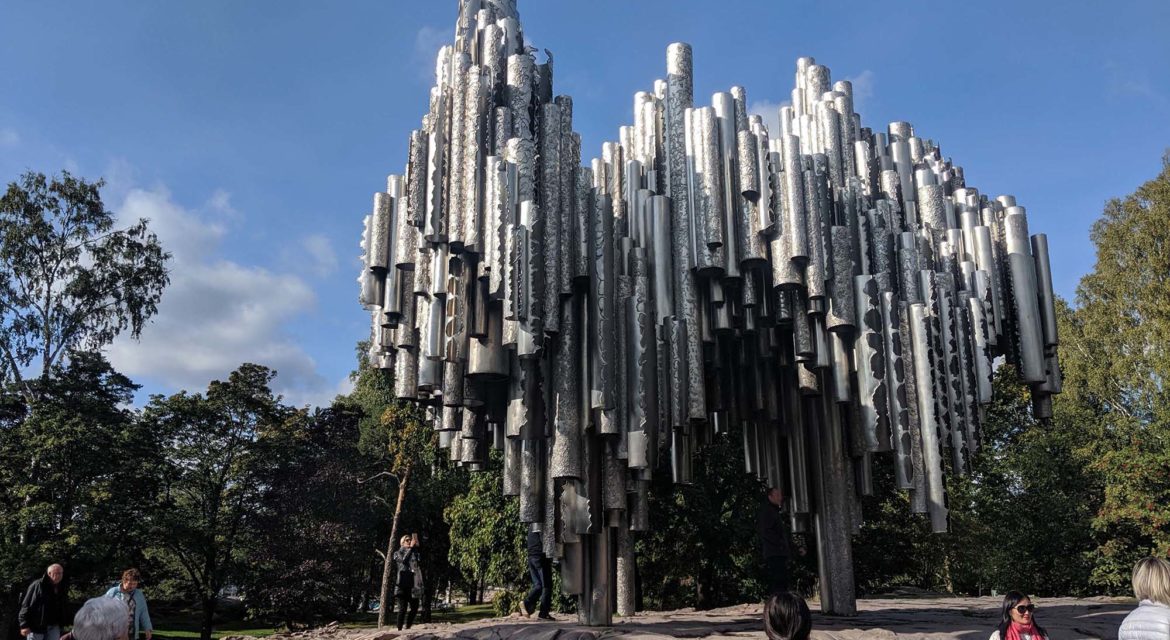 The Sibelius Monument is located in Sibelius Park in the district of Töölö in Helsinki, Finland. The seaside park and sculpture have become one Helsinki’s major attractions, serving as a focal point for events that pull in residents as well as one of the city’s most popular places for tourists to visit. Like other notable attractions in Helsinki, the park and monument have come to illustrate what it can mean for a place to become something so much more to visitors from across the region and world.
The Sibelius Monument is located in Sibelius Park in the district of Töölö in Helsinki, Finland. The seaside park and sculpture have become one Helsinki’s major attractions, serving as a focal point for events that pull in residents as well as one of the city’s most popular places for tourists to visit. Like other notable attractions in Helsinki, the park and monument have come to illustrate what it can mean for a place to become something so much more to visitors from across the region and world.

A Figurative and Abstract Honor to the Legacy of Sibelius
Known among locals as “Sibbari”, construction on what would become Sibelius Park began in 1937. The park was originally called Humallahden luonnonpuisto (Humallahti Nature Park) after the name of the adjacent bay. The park was renamed in honor of legendary Finnish composer Jean Sibelius (1865–1957) in 1945 on his 80th birthday.
Sibelius was a Finnish composer and violinist of the late Romantic and early-modern periods. He is widely recognized as his country’s greatest composer and is often credited with having helped Finland to develop a national identity during its struggle for independence from Russia. His other best-known compositions are Finlandia, the Karelia Suite and The Swan of Tuonela.
 Creating a monument to further honor his legacy was the result of a public fundraising campaign and a two-stage competition in 1961-62. The project stirred an unprecedented public debate at all stages, as the entire Finnish population seemed to be divided between those wanting a figurative statue and those who wanted something far more abstract.
Creating a monument to further honor his legacy was the result of a public fundraising campaign and a two-stage competition in 1961-62. The project stirred an unprecedented public debate at all stages, as the entire Finnish population seemed to be divided between those wanting a figurative statue and those who wanted something far more abstract.
Eventually, Eila Hiltunen submitted an entry for an abstract monument called Passio Musicae, consisting of hundreds of tubes, superficially resembling organ pipes. The entry ended up winning and in 1967 the jagged monument that consists of over 600 steel pipes unevenly grouped together at various heights was erected. The highest pipe in the piece reaches over 27 feet in the air. The abstract nature of the piece compelled an addition of the sculpted image of Jean Sibelius himself to satisfy the public.
Since being installed, the monument has attracted activity to the park from people across the world, signifying what kind of an impact a monument can represent for an entire city and region.

One of Helsinki’s Most Popular Statues
The Sibelius Monument has become one of Helsinki’s most popular statues with the park becoming one of the city’s one of the most well-known tourist attractions. Heads of State and VIP visitors are regularly taken there, as the park has been the venue of many special events. In 1983, to mark the 60th birthday of President Mauno Koivisto, 60 birch trees were planted at the corner of Mechelininkatu and Kesäkatu.
 The popularity of the monument has also attracted attention to other notable pieces of Finnish culture. In 1939 the Leo and Regina Wainstein Foundation organized a competition for a sculpture with a Kalevala theme to be erected in Helsinki. The competition was won by Aarre Aaltonen (1889–1980) with his entry Ilmatar and the Scaup, and it was decided that the bronze piece would be placed in what became Sibelius Park. The sculpture was unveiled in 1946.
The popularity of the monument has also attracted attention to other notable pieces of Finnish culture. In 1939 the Leo and Regina Wainstein Foundation organized a competition for a sculpture with a Kalevala theme to be erected in Helsinki. The competition was won by Aarre Aaltonen (1889–1980) with his entry Ilmatar and the Scaup, and it was decided that the bronze piece would be placed in what became Sibelius Park. The sculpture was unveiled in 1946.
Tour groups and guides make the Sibelius Monument an essential part of their tour while vendors sell items associated with the monument and all of Helsinki throughout the park. Items that range from magnets to clothing to posters showcase the monument, signifying the importance it represents to residents and to visitors The park and monument have also become mainstays on maps of all sizes. These indirect revenue opportunities that the monument has enabled have proven to be an important part of the tourist economy for Helsinki.
 To further illustrate the reach of the piece, full-size elements of the Sibelius Monument, which were originally material and technique studies, stand outside the UN Palace in New York and in Montreal. Additionally, a 1:5 replica is found at the UNESCO Palace in Paris.
To further illustrate the reach of the piece, full-size elements of the Sibelius Monument, which were originally material and technique studies, stand outside the UN Palace in New York and in Montreal. Additionally, a 1:5 replica is found at the UNESCO Palace in Paris.
The Sibelius Monument has come to serve as a notable attraction for Sibelius Park as well as a means of identity for Finland throughout the area and beyond. In doing so, it has been able to establish a legacy that is tied to the past and future of Helsinki and all of Finland.
The Spirit of Sibelius
 Sibelius once said, “Pay no attention to what the critics say. A statue has never been erected in honor of a critic.” That statement is somewhat ironic considering the impact that feedback had in the overall appearance of the Sibelius Monument, but it’s reflective of the spirit of Sibelius that inhabits the piece to showcase how monuments can define the legacy of people and places for the benefit of an entire country.
Sibelius once said, “Pay no attention to what the critics say. A statue has never been erected in honor of a critic.” That statement is somewhat ironic considering the impact that feedback had in the overall appearance of the Sibelius Monument, but it’s reflective of the spirit of Sibelius that inhabits the piece to showcase how monuments can define the legacy of people and places for the benefit of an entire country.


